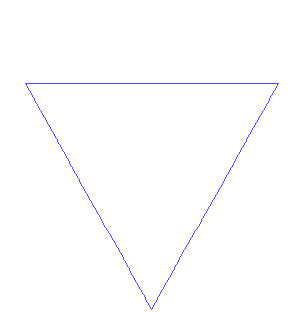



The Koch snowflake (also known as the Koch curve, Koch star, or Koch island[1][2]) is a fractal curve and one of the earliest fractals to have been described. It is based on the Koch curve, which appeared in a 1904 paper titled "On a Continuous Curve Without Tangents, Constructible from Elementary Geometry"[3] by the Swedish mathematician Helge von Koch.
The Koch snowflake can be built up iteratively, in a sequence of stages. The first stage is an equilateral triangle, and each successive stage is formed by adding outward bends to each side of the previous stage, making smaller equilateral triangles. The areas enclosed by the successive stages in the construction of the snowflake converge to times the area of the original triangle, while the perimeters of the successive stages increase without bound. Consequently, the snowflake encloses a finite area, but has an infinite perimeter.
The Koch snowflake has been constructed as an example of a continuous curve where drawing a tangent line to any point is impossible. Unlike the earlier Weierstrass function where the proof was purely analytical, the Koch snowflake was created to be possible to geometrically represent at the time, so that this property could also be seen through "naive intuition".[3]
- ^ Addison, Paul S. (1997). Fractals and Chaos: An Illustrated Course. Institute of Physics. p. 19. ISBN 0-7503-0400-6.
- ^ Lauwerier, Hans (1991). Fractals: Endlessly Repeated Geometrical Figures. Translated by Gill-Hoffstädt, Sophia. Princeton University Press. p. 36. ISBN 0-691-02445-6.
Mandelbrot called this a Koch island.
- ^ a b von Koch, Helge (1904). "Sur une courbe continue sans tangente, obtenue par une construction géométrique élémentaire". Arkiv för matematik, astronomi och fysik (in French). 1: 681–704. JFM 35.0387.02.


